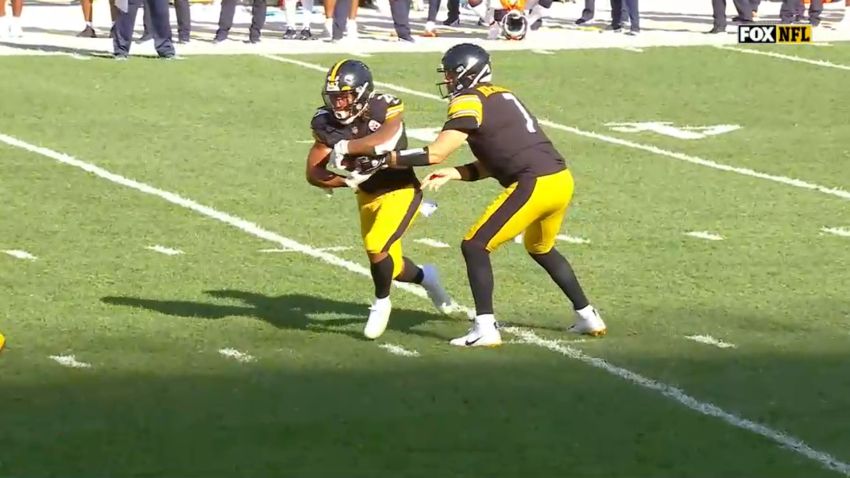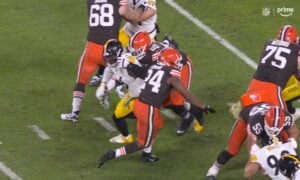The Pittsburgh Steelers have been running the ball more the last couple of weeks. They also happened to win those games. You can read into that what you want, but it’s fair to ask the question, has the uptick in rushing attempts actually been a representation of a commitment to the run?
That’s partly semantic, but we’ve heard from a number of different players and coaches already—and we can see on tape—that a lot of the runs we’ve seen are coming off of run-pass option plays, which, if you are unfamiliar with them, are exactly what they sound like: plays with run and pass options.
Ben Roethlisberger has been choosing to hand the ball off in these circumstances more frequently. He said after Sunday’s game that the Steelers’ late-game rushing success against the Seattle Seahawks came on plays that were “all RPOs”. So what exactly does that mean for the wide receivers on RPOs? Wide receivers coach Ike Hilliard explained on Wednesday.
“We’ll run routes based on coverage, based on down and distance, based on defensive structure”, he said of his group’s responsibility on RPO plays. “The quarterback has an option to throw the ball on the perimeter, so we don’t really cover up everyone all the time”.
“However, with the box count, depending on what they have, seven in the box, six in the box, it’ll make it easier for the quarterback to make a decision whether to hand it to the running back or throwing”, he continued. “When you see the routes on the perimeter, people may say, ‘why are these guys not blocking?’, but it’s kind of built in the play that way”.
Basically, unless the quarterback has some sort of pre-snap signal with one of his players—something he would often do with Antonio Brown in the past, for example—he is the only one by the time the ball is snapped who knows, if even he knows, whether they are going to execute a run play or a pass play.
The offensive line has to block for the run, but the wide receivers have the keep themselves available while also putting themselves in the position to block if the play should do their way. It also simplifies but limits their route tree and the nuances they are able to execute in their routes, which could potentially take them out of a play.
But you run RPOs because, in theory, you give yourself the best option to beat the defense that is on the field. If the defense is playing the run, you throw a pass. If they’re playing the pass, you hand the ball off. No need to tip your hand with an audible. Everyone around you knows both possibilities are an option. The key is to not let the defense see which way you’re tipping. And that takes some sacrifice from everybody involved, but perhaps especially the receivers.








